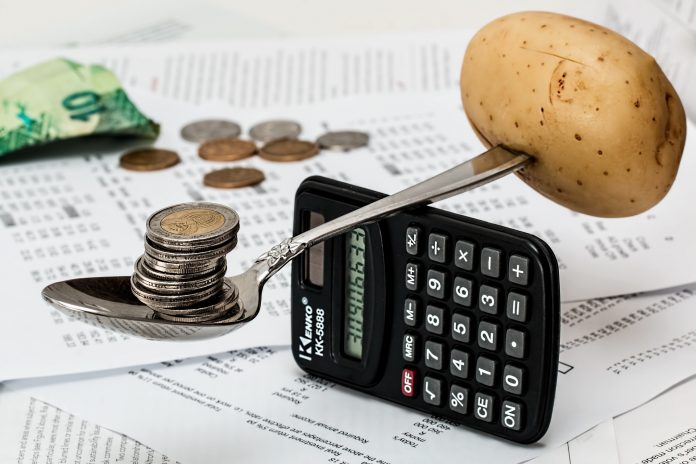According to the tentative calendar, IBPS will conduct PO prelims exam in October. Since managing time is a very important aspect in PO exam, candidates must use shortcuts in the exam. We have explained about 7 important IBPS PO maths tricks in this blog.
In the prelims exam, aspirants get a little over half a minute to answer a question. Hence, it is essential to minimise the time taken on calculations. IBPS PO maths tricks will come in handy in doing calculations quickly. Aspirants can prepare for IBPS PO online at their own pace and comfort.
It is important for candidates to practice the IBPS PO maths tricks they learn so that it becomes their second nature. Candidates should not be unsure of the results they get after using the shortcuts. Else, the entire exercise becomes futile. To avoid such dilemmas, try deploying shortcuts in IBPS PO mock tests itself. Use mocks as your testing grounds.
20 IBPS PO Mocks for just Rs. 99
Download IBPS PO Study Material PDF
Most of the questions in quantitative aptitude section of IBPS PO exam are based on ratio and proportions. Aspirants can check IBPS PO previous year papers for the same. Hence, most of the IBPS PO maths tricks discussed are focused on quick multiplication and finding squares and cubes.
IBPS PO maths tricks:
1.Squaring numbers ending in 5:
This is one of the most widely used tricks. You can square a number ending in 5 in a jiffy.
Let us take an example:
Square of 55 = 3025
The last 2 digits of a number that ends in 5 will always be 25.
To get the other digits, take the number excluding the last digit and multiply it by its successor.
In this case, the last 2 digits will be 25. Take 5 and multiply it by (5+1)=6. We get 30 as the result.
Hence, the result is 3025.
2.Squaring numbers close to 50 or 100:
Let us assume that you have to square 97.
Write this number as (100-3)
Now, we can expand the term using (a-b)^2 identity.
Expanding we get, 10000+9 -600 = 9409.
As you can see, it is much easier than calculating mechanically.
We can apply the same technique to the numbers closer to 50 too.
Square of 53 = (50+3)^2 = 2500 + 9 + 300 = 2809.
3.Multiplying numbers close to 50 or 100:
This is similar to the method discussed above.
Eg) 43*98 = 43*(100 – 2)
= 4300 – 86
= 4214
Write the number closer to 100 as (100+x) or (100-x). Then, using the distributive property of multiplication multiply them. Doing so will greatly ease the entire process.
4.Problems on unitary methods:
These problems include time and work, pipes and cisterns and time-speed-distance. The best way to solve these questions is to either use LCM or percentages.
Eg) A can complete the work in 10 days. A and B working together can complete the work in 2 days. In how many days, can B working alone complete the work?
Let us assume the work to be 20 units (LCM of 10 and 2)
A takes 10 days to complete work. => A completes 2 units of work per day.
A and B together take 2 days to complete work. -=> A+B complete 10 units of work per day.
A = 2 and A+B = 10 => B = 8 units/day.
Therefore, B can complete the work in 10/8 = 2.5 days.
Another way to solve this problem is to think in terms of percentages.
A can complete the work in 10 days. => A completes 10% of the work in a day.
A+B can complete the work in 2 days.=>A+B complete 50% of work in a day.
=> B completes 40% of the work in a day. Therefore, B will complete the work in 2.5 days.
5.Consecutive discounts:
If a shopkeeper offers two consecutive discounts of a% and b%, then the net effect will be a+b-(ab/100) percentage change.
Eg) A shopkeeper offers two consecutive discounts of 10% and 20% on Rs. 100. What is the net discount offered?
a=10 and b= 20
=> Net discount = 10+20 – 200/100 =30-2 =28%.
Similarly, 2 if 2 consecutive hikes of a% and b% are offered, then the net percentage change will be a+b+(ab/100).
Eg) Ram was getting a salary of Rs. 100/day. His boss decided to hike his daily wage twice by 10%. What is Ram’s new salary?
The net change will be 10+10+(100/100) =20+1 = 21%.
6.Multiplying numbers equidistant from a multiple of 10:
Eg) 84*76
Both the terms vary from 80 by 4.
We can write them as (80+4)(80-4).
We can use the identity (a+b)(a-b) = a^2 – b^2
=> (80+4)(80-4) = 6400 – 16
84*76 = 6384
7.Adding a long list of numbers:
When adding an extensive list of numbers, treat the digits separately. Add the hundred’s digits, ten’s digits and 1’s digits separately and finally add them.
Eg) 834+926+765+432+786=(800+900+700+400+700) + (30+20+60+30+80) + (4+6+5+2+6)
= (3500) + (220) + (23) =3743.
Some other tips:
Try to remember squares of numbers till 30. While solving a question, if you have to take the square root of 2317, you can see that the value is very close to 2500 (50 square) and hence, check for numbers around 50 and get an approximate answer.
IBPS PO Previous papers (download pdf)
Remember cubes till 30. This will help you save a lot of time in approximation questions. Try to deploy as much IBPS PO maths tricks during practice so that you feel confident about using them on the D-day. Also read about how to quadratic equations for IBPS PO exam.
Aspirants can read about how to prepare for high-level Data interpretation for IBPS PO to get an idea about the topic. For further, learn about data sufficiency questions for IBSP PO exam.





![How To Manage Time In CAT Exam? [Section-wise Tips] How to manage time in CAT exam ?](https://cracku.in/blog/wp-content/uploads/2018/09/fig-03-09-2018_10-54-46-218x150.jpg)